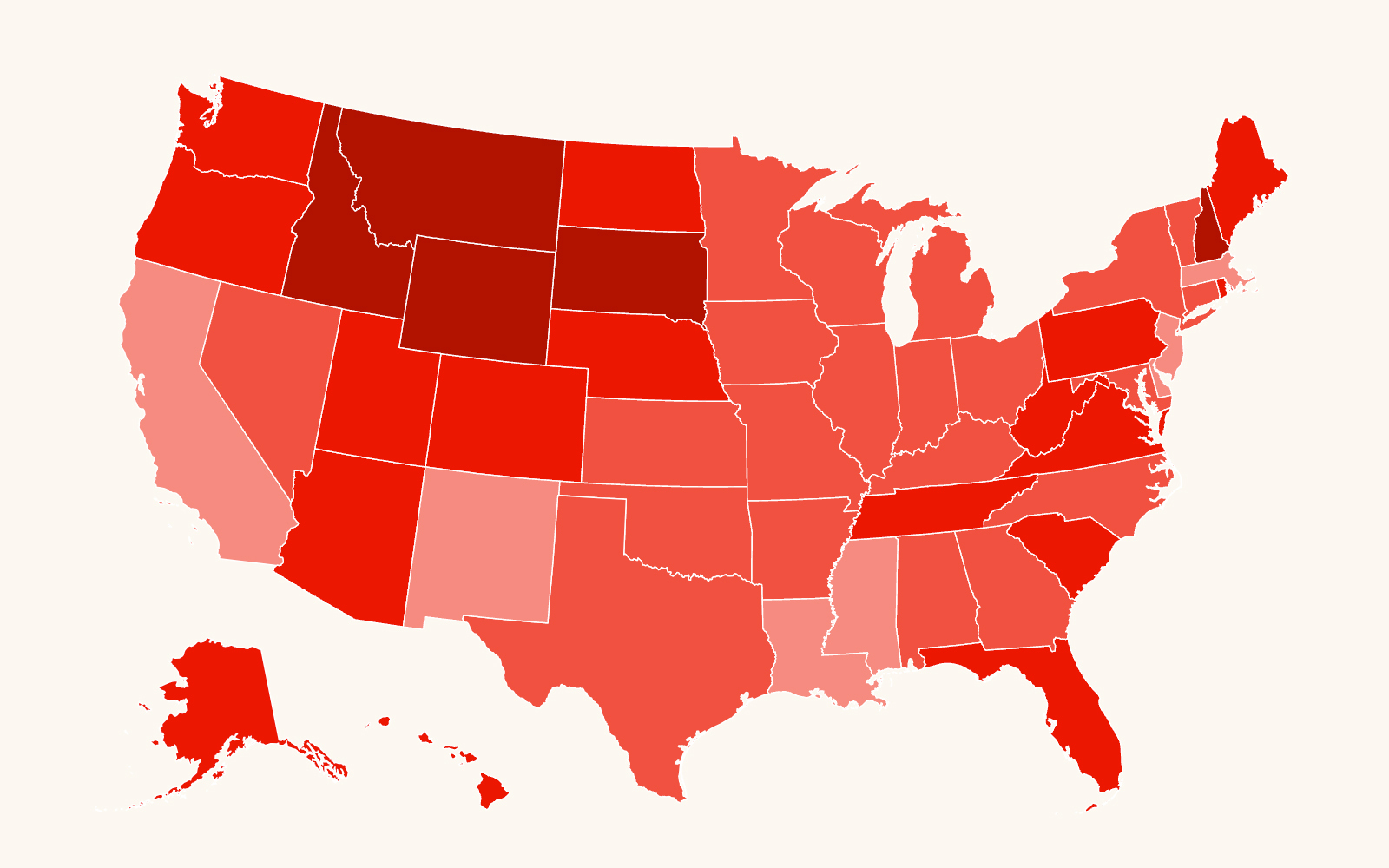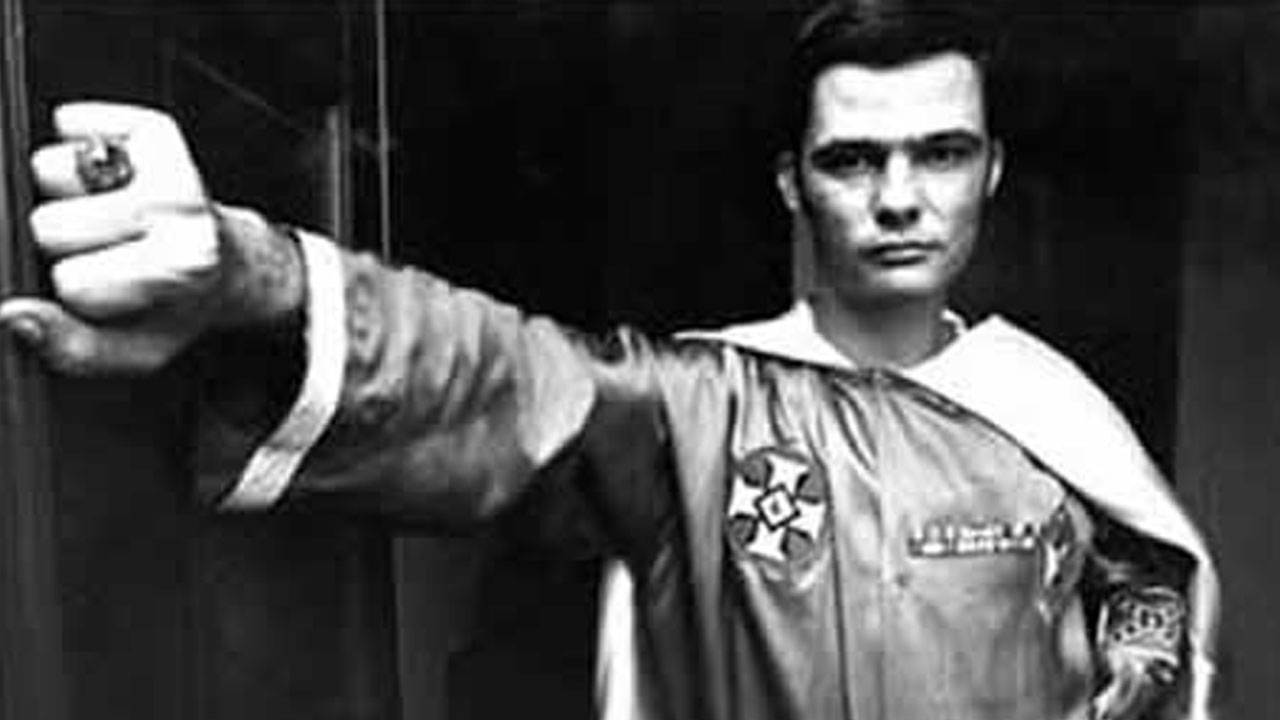An iconic figure of the radical right, Louis Beam played a key role in shaping the revolutionary racist movement in the United States during the three decades following the Vietnam War as one of its principal theorists and strategists.
Beam mentored domestic terrorists, popularized the concept of “leaderless resistance,” and helped guide the white supremacist movement into the computer age.
Criminal History
Beam was arrested in the early 1970s in Houston and charged in connection with the bombing of a left-wing Pacifica radio station and a machine-gun attack on the local Communist Party headquarters, but the charges were later dropped. Later in the decade, he was arrested for the attempted assault of Deng Xiaoping, the visiting leader of Communist China, in Texas.
In 1982, Beam was arrested for kidnapping his toddler daughter from an estranged wife, Kara Mikels. Mikels decided not to proceed with the case after reportedly receiving threats from Beam’s Klan associates.
Along with most of the other principal leaders then prominent on the radical racist right in America, Beam was indicted in 1987 for seditious conspiracy to overthrow the government, a plot supposedly hatched at the 1983 Aryan World Congress, put on by the neo-Nazi Aryan Nations group. Beam and all his co-defendants, including Aryan Nations leader Richard Butler, were acquitted in the federal trial held in Fort Smith, Ark.
In 2002, Beam was accused of sexually molesting his two young daughters during a custody dispute with his fourth ex-wife, Sheila Toohey. Toohey also alleged that Beam refused to let the girls swim in a hotel pool with African Americans and told them that police officers murder children. Authorities in Texas eventually dropped plans to present the molestation allegations to a grand jury, noting contradictions in accounts given to social workers by the girls.
In His Own Words
“Where ballots fail, bullets will prevail”
— Catchphrase coined by Beam during harassment by his Texas Klan group of Vietnamese fishermen in 1981
“The time is past for talk… We must begin the preparations necessary to retrieve our country from the hands of the enemy which now controls it. It should be plain to everyone what is needed: knives, guns and courage.”
— “It is Time,” Essays of a Klansman, 1983
“I’m here to tell you that if we can’t have this country, as far as I’m concerned, no one gets it. The guns are cocked, the bullets are in the chamber… . We’re going to fight and live or we’re going to die soon. If you don’t help me kill the bastards, you’re going to be required to beg for your child’s life, and the answer will be no.”
— Speech at the 1983 Aryan World Congress
“The New American Patriot will be neither left nor right, just a freeman fighting for liberty. … Soon there will be millions in this country of every political persuasion confronting the police state in streets throughout America. … Wake up and smell the tear gas. Freedom is calling its sons and daughters.”
— “New World Order,” 1999 essay by Beam
Background
Louis R. Beam Jr. was born in the hardscrabble town of Lufkin, Texas, the eldest of four children. He later attended segregated schools in Lake Jackson, Texas. Little else is known about his childhood, though none of his three siblings went on to espouse racial hatred.
Beam signed up for the Army during the Vietnam War and served 18 months, mostly as a .50-caliber machine-gunner on helicopters. During the war, Beam later said his goal was “wracking up 50 kills” and that he reveled in “the joys of killing your enemy.” The Army awarded him the Distinguished Flying Cross for heroism.
In 1968, Beam came home full of rage at “communists” and the government. He quickly joined the Texas state chapter of the United Klans of America, the Alabama-based group that was behind much of the violence directed at civil rights workers in the 1950s and 1960s. In the early 1970s, Beam was accused of bombing a left-wing radio station and firing a machine gun at the local Communist Party headquarters, but he was never tried for those crimes.
In 1976, Beam shifted his allegiance to David Duke‘s Knights of the Ku Klux Klan, where he rose quickly through the ranks from district to state leader. Beam mentored recruits in how “to get people into the ‘kill zone’” and led workshops on guerilla warfare at paramilitary camps. Beam also directed the Klan’s efforts to recruit members among active-duty army personnel at Fort Hood in Texas.
In 1981, Beam delivered a fiery speech and burned a skiff with “USS Vietcong” painted on its hull in front of a mob of white commercial fishermen near Galveston Bay, Texas, angry at having to compete with Vietnamese refugee shrimpers in the Gulf of Mexico. In the weeks that followed, crosses burned in the yards of the Vietnamese fishermen, arsonists destroyed at least two Vietnamese-owned boats, and heavily armed Klansmen rode a shrimp boat around the bay, displaying a hanging human effigy and firing blanks from a cannon.
The Southern Poverty Law Center stepped in to represent the Vietnamese fishermen and won injunctions that required Beam’s Klan group to halt the intimidation and shut down five paramilitary training camps.
Also in 1981, Beam traveled to the Idaho compound of the neo-Nazi organization Aryan Nations. In turn, Aryan Nations chieftain Richard Butler later attended a Klan rally in Galveston Bay and designated Beam an Aryan Nations “ambassador at large.” The next year, Beam moved to the Aryan Nations compound, cementing a relationship with Butler that would last many years.
Two months later, a group of Beam’s friends at Aryan Nations secretly formed the underground domestic terrorist group The Order, also known as the Bruders Schweigen or the Silent Brotherhood. Although Beam’s possible ties to The Order and its activities remain unclear, the group’s leader, Robert Mathews, passed out to his followers copies of Beam’s Essays of a Klansman, published at Aryan Nations in 1983. The book was dedicated to “those yet unknown patriots, who are even now preparing to strike at the enemies of God, our race and our nation.” The FBI later concluded this was a reference to The Order, which was active in 1983 and 1984. At one point during The Order’s two-year rampage of robberies and assassinations, Mathews also distributed a document to his followers identifying Beam, under the code name “Lone Star,” as the future civilian leader of the “Western district” of America. He also named others to lead a post-revolutionary America,
In 1984, Beam and two other white supremacists established the Aryan Nations Liberty Net, the first white supremacist online bulletin board, becoming one of the first racist leaders — and first Americans — to use computers to organize.
In early 1987, fearing that federal agents were planning to arrest him, Beam left the United States for Mexico. Sure enough, in April of that year, he and 13 other white supremacists were indicted by a federal grand jury in Arkansas for allegedly conspiring to overthrow the government. As a result, the FBI added Beam to its Ten Most Wanted List. Not long after, Mexican federales closed in on a building where Beam was hiding out with his then-wife, Sheila Toohey. After a shootout with Mexican authorities that left one officer critically wounded, Beam was apprehended in Chapala, Mexico, and rapidly extradited to the United States. At his bail hearing, Beam told the judge, “What I’m charged with is an honor, sir.”
Ultimately, in April 1988, an all-white jury acquitted Beam and his co-defendants of sedition, a huge victory for the radical right. After the trial, Beam launched a (now defunct) quarterly racist magazine titled The Seditionist — an obvious jab at the law enforcement officials who had failed to convict him of that crime.
In 1992, he revised an earlier essay on the concept of “leaderless resistance” for print in his publication. The article called on white revolutionaries to abandon planning in large groups, and to instead take action in small cells of one to six men. The basic idea was to avoid the destruction of revolutionary organizations when they were infiltrated or in other ways compromised by law enforcement officials, limiting damage to a single cell at most. Rather than act on orders from above, Beam thought the cells should act independently. These “lone wolves” would “act when they feel the time is ripe, or [would] take their cues from others who precede[d] them.”
Coming in the aftermath of the government’s effort to destroy the entire movement at the Fort Smith sedition trial, Beam’s article became a seminal document in the white supremacist community, establishing Beam as a leading radical theorist.
Beam gave his last public speech in 1996. Since then, he has complained of the effects of Agent Orange, the controversial defoliant used by the government in Vietnam, and intermittently published articles on his personal website. One of his most significant essays responded to violent left-wing protests against the 1999 gathering of the World Trade Organization in Seattle. Beam hopefully postulated an antigovernment movement that would include both right- and left-wingers among its fighters. “Soon,” he wrote, “there will be millions in this country of every political persuasion confronting the police state on streets throughout America. … Wake up and smell the teargas. Freedom is calling its sons and daughters.”
Beam remained affiliated with the Aryan Nations as an “ambassador at large” for years, but was less and less active in that role. The group largely disappeared in the years after a 2000 civil judgment against it in a case brought by the Southern Poverty Law Center. Today, Beam appears to have no relationship to the tiny remants of the once-powerful organization.
In the years since the turn of the millennium, Beam has written an occasional essay, but seems to have gone dormant, at least in the visible parts of the white supremacist movement. He lives with his fifth wife in New Braunfels, in the hill country of central Texas, and has raised twin sons there. While he remains a revered figure in the pantheon of the radical right, and his essays are still important, it remains to be seen if he will return to active participation in the movement.

